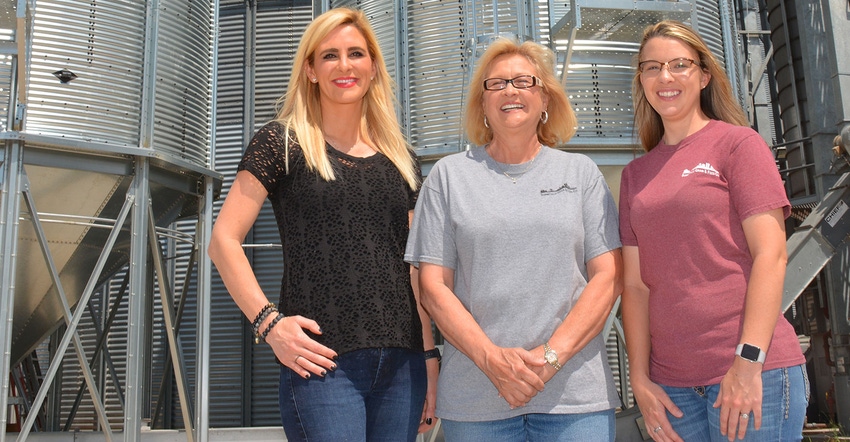
Folks come into Summitville Grain and Feed Company for a lot of reasons. They check commodity prices; pick up seed, feed and supplies of all sorts; and they chat about the weather, crop conditions and what’s going on in Coffee County, Tenn.
It was mostly dry May 25. December beans were $10 a bushel; corn was at $4, and wheat had pushed up to $5.15. Soybean basis registered negative 30 cents, and corn negative a dime.
“Farmers’ attitudes are a little better,” said Cindy Anderson, Summitville Grain and Feed Company owner. “They are more optimistic.”
Steve Hawkersmith operates a tree nursery and grows corn, soybeans and hay. He and Jody Taylor were chatting near the nucleus of the store — the combination information desk/checkout counter/lounge area. “The hay is not as good as last year,” Hawkersmith said. “Spring was wet and conditions were tough. But the beans and corn are up and looking good.”
Anderson said the hay crop across the county is mixed. “Some hay was hurt by a late freeze,” she explains. “For farmers who got fertilizer on early, the grass came up and the cold snap hurt some of it. Those who fertilized late were OK. That late frost is hurting some wheat, too.”
She says the wheat crop “is fair. Our ground is not good wheat land. It’s too wet-natured in the winter months. A lot of it is grown for hay.”
Corn and soybeans
Most row crop acreage goes to corn and soybeans. “We have about 20,000 acres of each,” says Coffee County Extension agent Steve Harris. Hay acreage and cattle operations are also important to the county ag economy.
Anderson says most of the row crop acreage has been planted. “Corn is done and soybeans are about 75 percent planted.”
Harris says producers are having difficulty cutting hay. Conditions have been somewhat dry after a wet spring, but he says, “spotty rains have prevented farmers from cutting hay.”
“We’re not getting any general rains,” Anderson says, “just spotty showers.”
“I’m afraid it will turn hot and dry after all the rain we had this spring,” says Taylor, who joined Hawkersmith and a few other customers at the checkout counter.
Suzanne Boze, Summitville Crop Insurance, Anderson’s daughter, said on a follow-up call a week later that the remnants of tropical storm Alberto did little to ease the drought. “We haven’t gotten much rain overall, just intermittent showers,” she said.
Anderson said Coffee County farmers make the best of their wet-natured land. “We don’t have enough rolling ground,” she said, “but Coffee County is a big no-till county.”
Reduced tillage
Harris said NRCS promotes reduced tillage systems, as well as cover crops.
“Erosion control, clean air and clean water are important to us,” Anderson said. “County farmers began using cover crops about four or five years ago.”
“Producers are using a mix of cover crop species,” Harris added, “depending on the crop they will plant behind the cover.”
“Most plant a mix of wheat, clover, rye, turnips, vetch and winter peas,” said Trisha Walker, manager of the Summitville Grain and Feed Company. “They use several different programs.”
On a brief tour around the county, Harris pointed to fields of no-till corn with green rows of young plants showing against the light brown residue of last year’s crop. A few soybeans were beginning to peek through old crop stubble as well.
Farmers Harris stopped to see said the practice reduces erosion but also helps hold moisture and improves soil health.
Back at the Grain and Feed Company, folks were still coming in and out, checking on prices, picking up hardware or feed and looking at the mostly clear sky and wondering if they needed to cut hay or wait another day or if the few days of dry weather was a harbinger of a longer drought. Something to talk about.
About the Author(s)
You May Also Like






